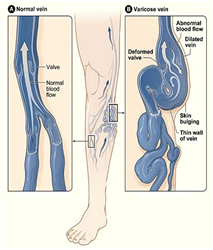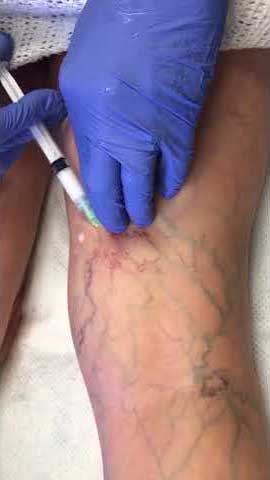What is varicose vein?
Varicose vein of legs is common, affecting 1-15% of adult men and 20-25% of adult women. The leg vein normally contains
multiple valves which helps the blood flow in direction of the heart. When these valves are damaged, blood starts pooling in
the legs causing swelling of the legs, aching pain, heaviness, fatigue, skin discoloration, itching, varicosities (prominent vein)
and if not treated it may develope non-healing ulcers in leg. Ultimately, the person is forced to lead a disabled life.
The varicose vein consists of:-
A. Venous insufficiency or venous reflux at groin
B. Prominent and dilated perforators.
C. Dilated tortuous side branches.








